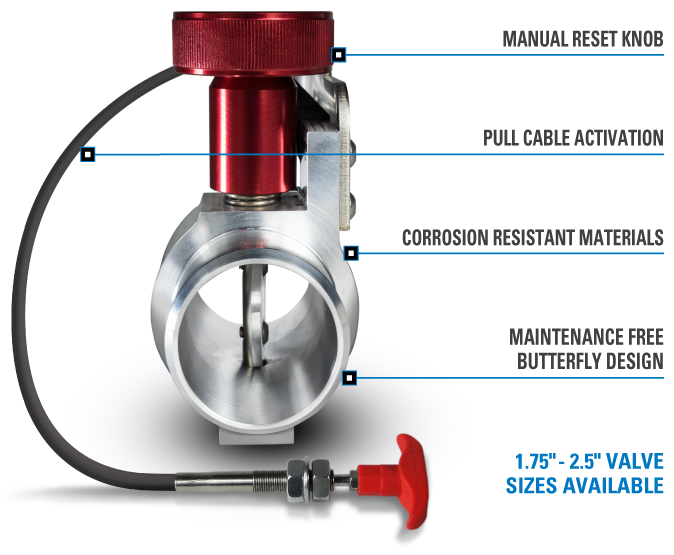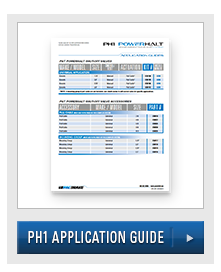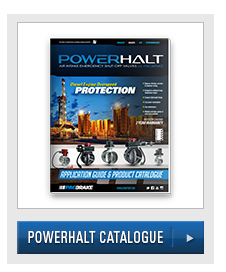PH1 PowerHalt
INCREASED PROTECTION – REDUCED COST
Pacbrake’s PH1 PowerHalt air intake emergency shut-off valves provide a reliable and safe method of shutting down the engine. It is a cost-effective solution for your safety needs that can be customized for specific client’s needs.
This valve option is recommended when the operator works in close proximity to the equipment.
PH1 POWERHALT: FEATURES
- Compact & lightweight
- Low maintenance
- Pull cable valve
- Cost-effective
A COMPLETE INSTALLATION — WITH CUSTOMIZABLE SOLUTIONS
- PH1 is a customizable valve – Choose the valve for your application, mounting kit and pull cable and receive all the components necessary for a complete installation
- Easy Installation
- Low part counts
PH1 POWERHALT: SPECIFICATIONS
An extensively tested, cost-effective and easy to operate shut-off valve.
PH1 PULL CABLE OPTIONS
- Pre-assembled stainless steel high quality pull cables for easy installation & safety
- Braided lines capable of a tight radius
- Red T-handle with large nameplate for easy location
- Pull cable sizes: 2′, 4′, 6′, 8′ & 10′
SYSTEM SELECTION
Unsure if the PH1 is the right option for your equipment? The PowerHalt System Selection Guide is designed to help you choose the best safety system for your application.
ORDERING YOUR POWERHALT
With the complexity of most engine systems today and the hundreds of different applications on the market, it is important to understand the requirements and product options.
PowerHalt offers a broad range of products and systems that range from basic manual pull cable systems to fully automatic, electronic reset systems. These come with an array of mounting installation kits, components and control options for most industry applications.
HOW TO ORDER
First check to see if your application is listed in our PH1 APPLICATION GUIDE.
If not, please review the HOW TO ORDER.
POWERHALT WARRANTY
Pacbrake’s PowerHalt air intake emergency shut-off valves include the best warranty on the market with their Industry Leading 2 Year Warranty – starting from the in-service date of the valve on the engine/equipment – not the purchase date of the valve).






